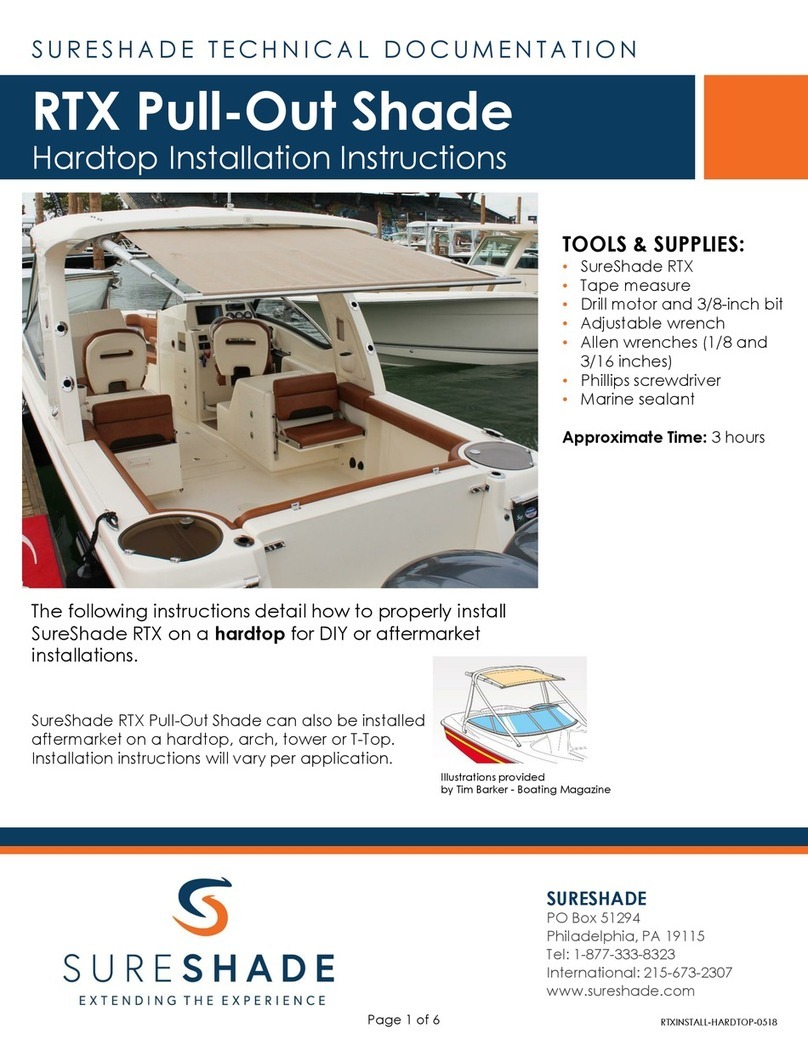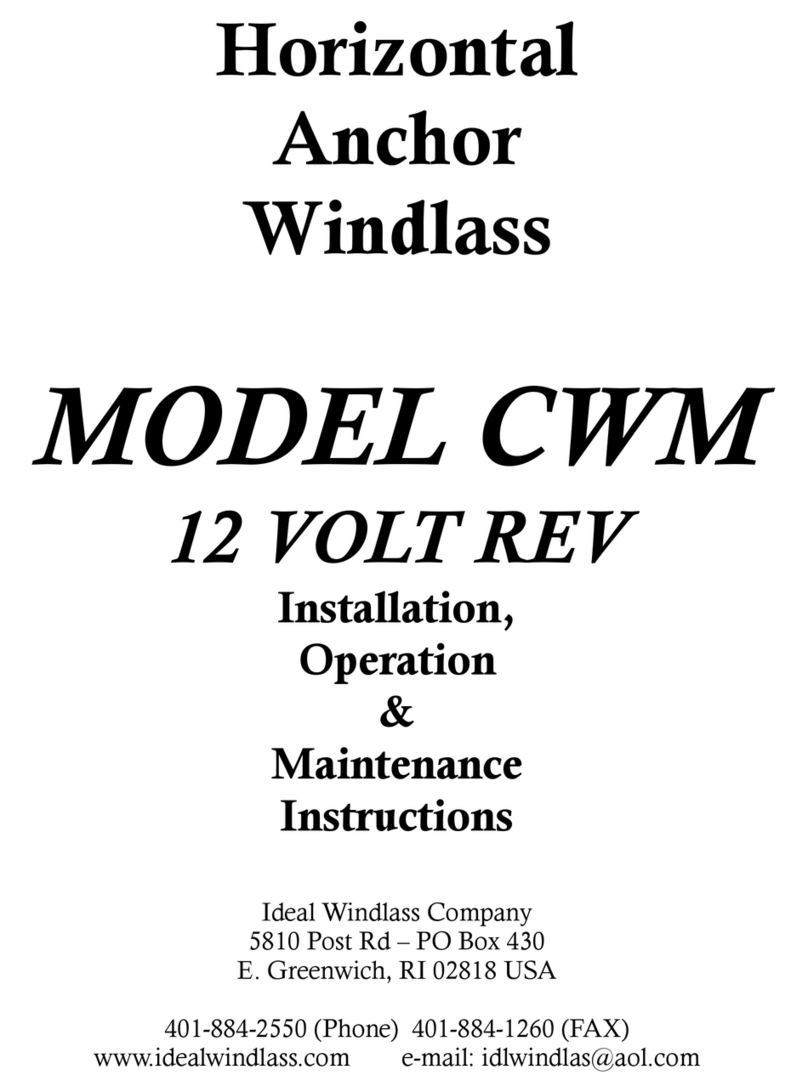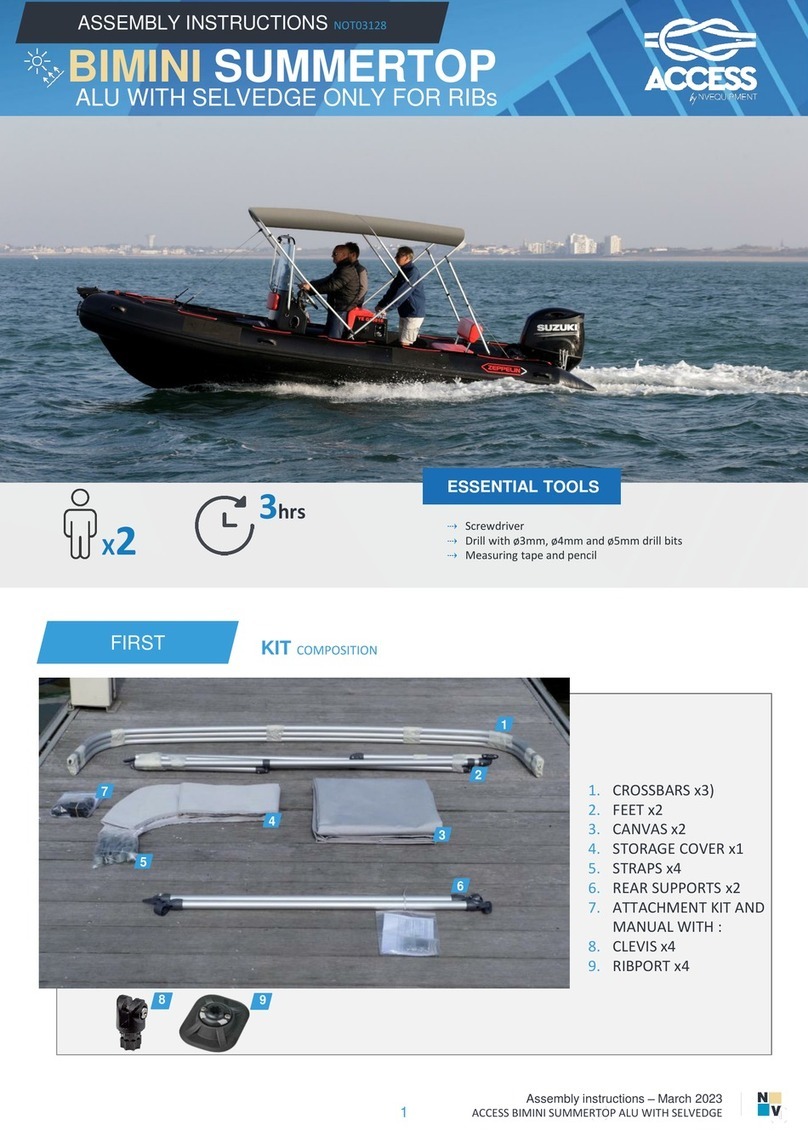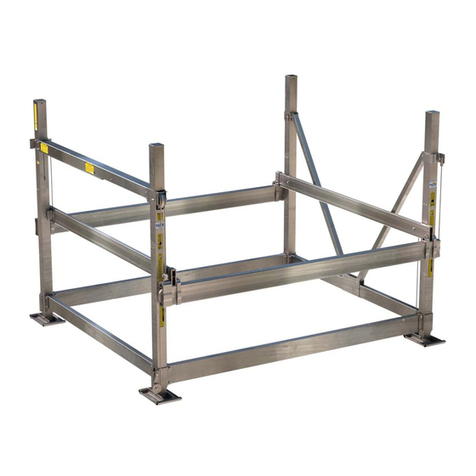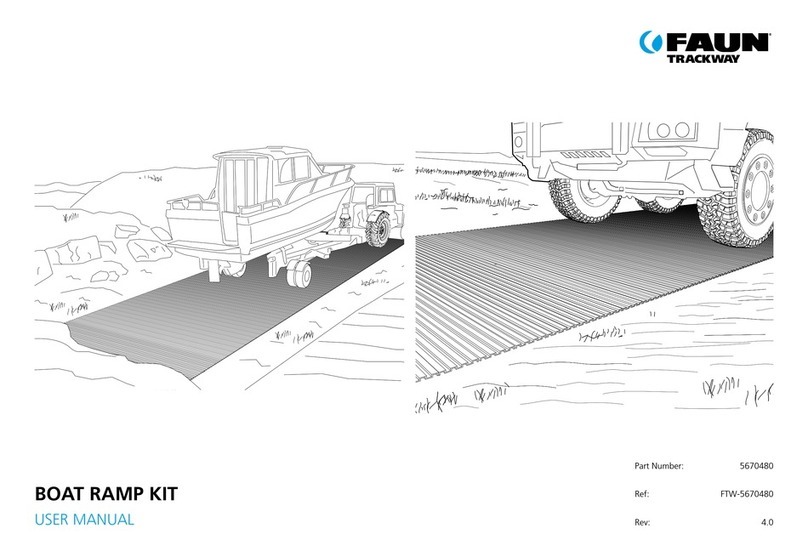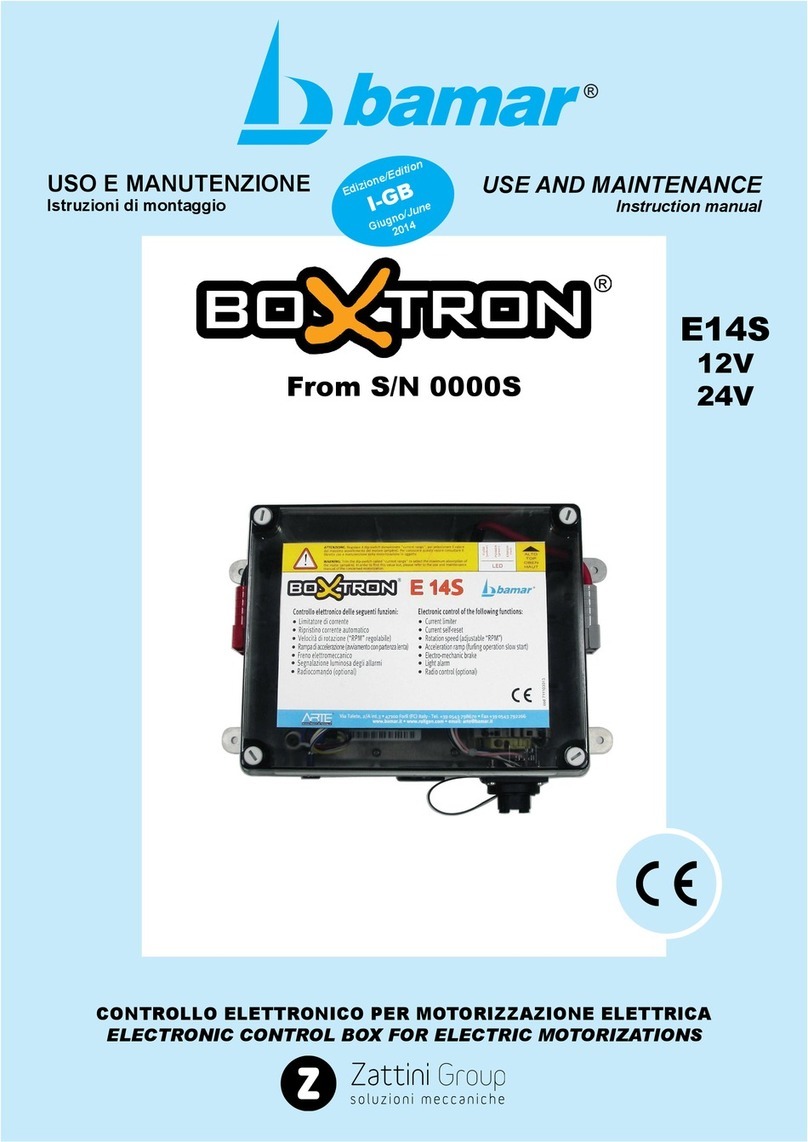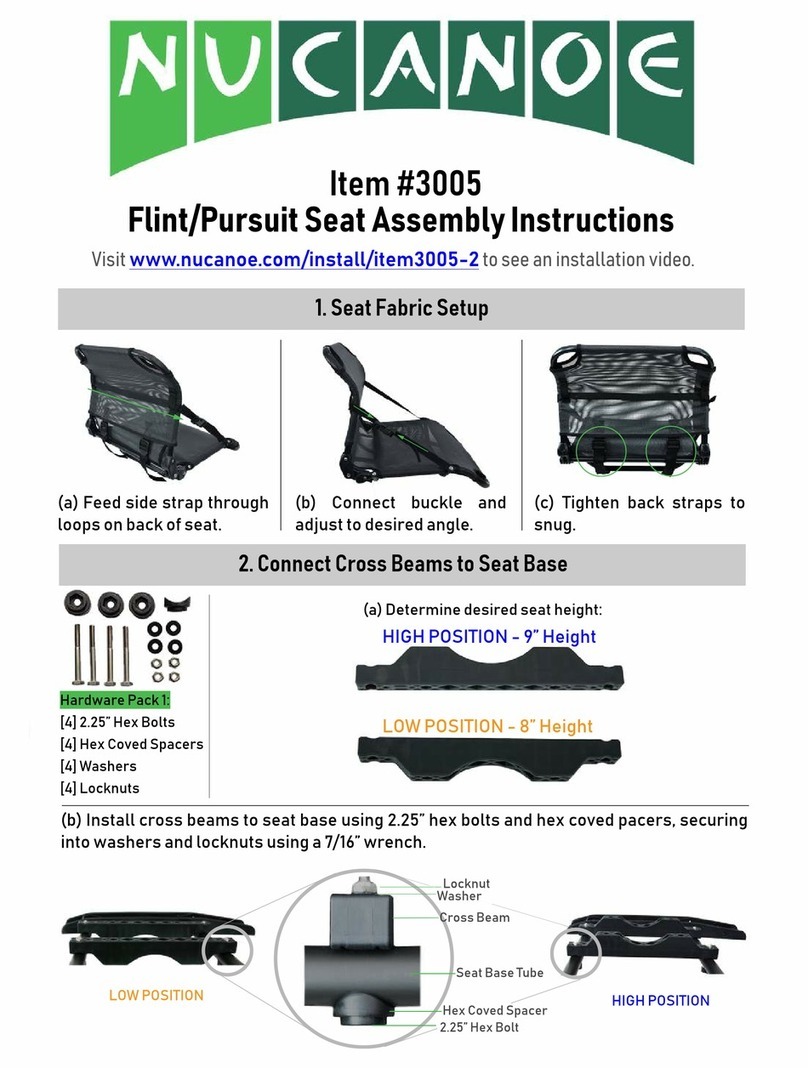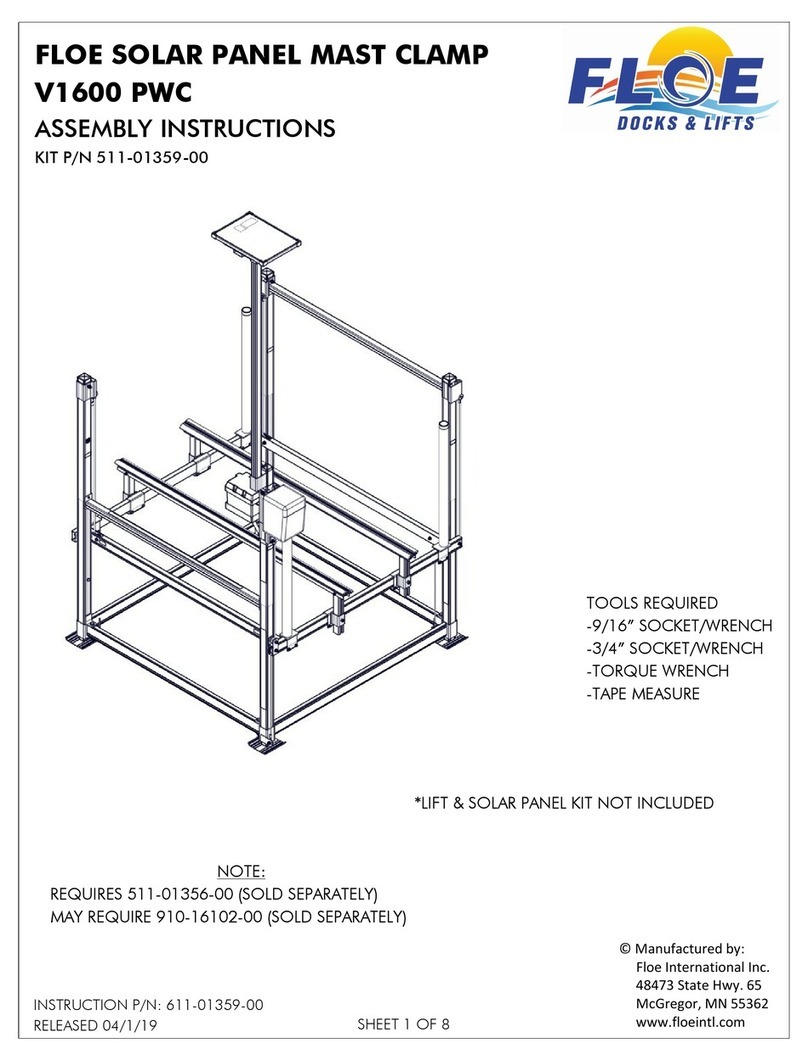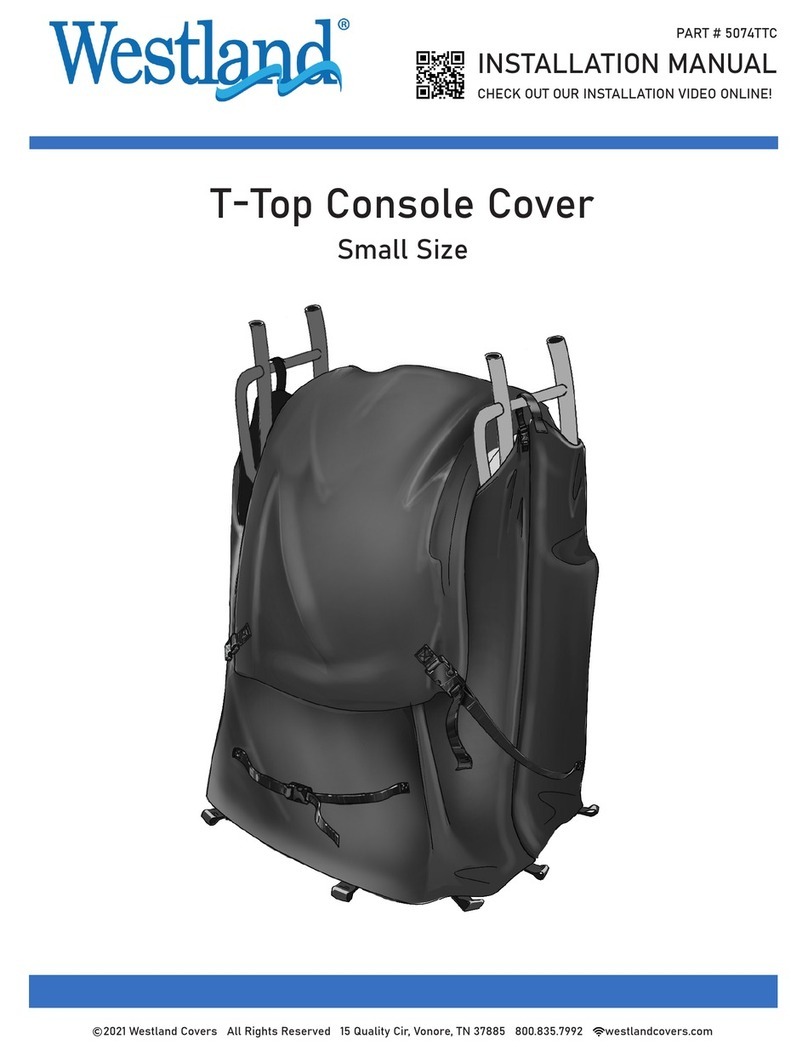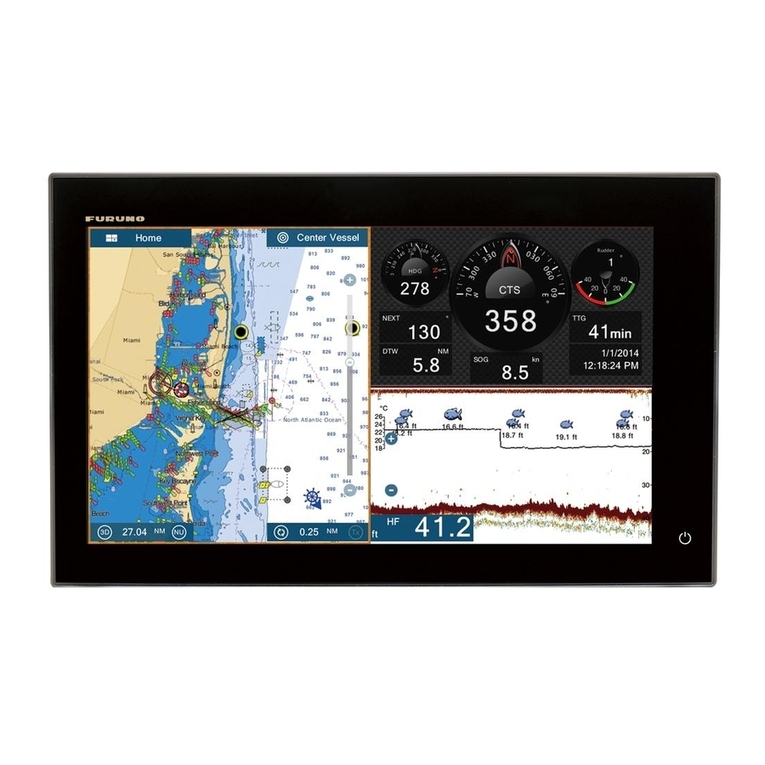Big Jon Sports Band Buster User manual


A well planned boat insures an easier, safer and more enjoyable shing trip. Before
mounting your Big Jon Sports® downriggers, planer riggers and rod holders, it is a
good idea out get in the boat with your shing buddies and locate the best place-
ment of all trolling equipment. Every thing should be easily accessible to all mem-
bers in your shing party. On the following pages are some examples of popular
layouts for a variety of shing boats.
For the owner of a small or mid-sized boat
(with tiller steering) who often shes by themselves,
mounting a pair of downriggers on the transom is a practical choice. This layout
keeps all essential equipment within reach and eliminates the need to move around
the boat.
Downriggers
Mounted On The
Transom Of A Tiller
Steered Boat...
Another popular layout for tiller
boats is to mount the downriggers
amidship. This allows easy access
for both the person piloting the boat
and for a second sherman seated forward in the boat. Note that the sides of the
boat keep the downrigger cables and shing lines well clear of the motor’s propeller
.
A pair of pedestal mounts will allow the downriggers to clear the boat’s gunwales.
Adding swivel mounting bases will make docking your boat easier.
Downriggers
Mounted Amidship
On A Tiller
Steered Boat...

On larger console style boats that will accommodate a larger shing party, you have
more opportunity to run larger lure presentations. However, the same
considerations
given to a small boat hold true. All equipment should be accessible to all of the shing
party.
For boats (16 foot or larger)
that have a four inch gunwale
deck, mounting a pair of downriggers
with swivel mounting bases just forward
of the motor well is a common practice. This location makes
lines easy and safe. (The swivel mounting base allows you to spread your lure
presentation over a wider area when shing and turn the downriggers in line with
the boat for docking and trailering.)
Downriggers
For A Boat With
Console Steering...
Cover more water
to catch more sh.
Charter captain’s and tournament
pros increase the chances for a successful shing trip by increasing the number of
lures in their presentation. By mounting two downriggers on the transom and two
downriggers on swivel mounting bases on the gunwale decks, you can control the
position of your lure presentation.
Four
Downriggers
For A Large
Lure Presentation...
Big Jon Sports®builds
heavy-duty transom bars
that are pre-drilled and tapped
to accept four Big Jon Sports®
downriggers. The whole assembly of transom bar
and downriggers can easily be installed or removed as one unit.
Transom Bars
Add Versatility
To Your Boat...

A Planer Rigger Mounted On The
Bow Of A Tiller Steered Boat...
The bow deck of a tiller
boat is the ideal location for
mounting a planer mast. When
installing a planer rigger system,
remember two important facts.
First, the taller your mast is, the
greater the distance your planers
will travel from the sides of your boat.
And second, the farther forward you
mount the mast, the less distance your
planers will travel behind your transom.
Both points effect handling and control.
Mounting A Planer Rigger
In A Pedestal Seat Base...
Many shermen choose to adapt their
planer mast so that it will t into the
base of the pedestal seat at the bow
of their boat.
The Big Jon Sports® Service Department
can custom build a Pedestal Seat
Adapter for some styles of pedestal
seats on the market, just call:
(231) 275-1010 or go on-line,
to the Service page of
our website...
www.bigjonsports.com
Planer Riggers For Boats
With Console Steering...
For larger boats, where the bow is not
easily accessible, a pair of single reel
planer masts mounted just behind the
cabin or canopy is a popular solution.
The mast and tow lines are easy for all
members of the shing party to reach. You
can also update your mast on the bow with
a pair of electric reels, which are
remotely controlled from
the steering console.
Fish With
The Big Jon Sports®Otter®Boat...
The Otter® Boat was designed to achieve a
greater distance from your boat than the old
fashion boards or skis. It handles rough water
well and won’t stall in turns.

Mounting The Big Jon Sports®
Standard 4” x 4” Mounting Plate...
Installing Big Jon Sports®
Trolling Equipment
This mounting plate accepts all Big Jon Sports
®
downriggers and rod holders with 4” x 4” bases.
It also accepts the Big Jon Sports
®
quick-slide
and swivel mounting bases.
1. Make sure all electrical wiring below the mounting
surface is clear of the area to be drilled.
2. Use the mounting plate as a template to locate
and mark the hole.
3. Drill the holes in the mounting surface and the
backing board together.
Note: The use of a backing board is
recommended to distribute the
stress load over a larger surface
for greater strength.
4. Bolt the mounting plate and the backing board
to the mounting surface with at washers and
nuts (as shown in the illustration).
Mounting The Big Jon Sports®
Slim-Line Mounting Channel...
This mounting channel accepts the
Gadabout
®
downrigger with slim-line
base and the single Multi-Set
®
rod holder
1. Make sure all electrical wiring below the
mounting surface is clear of the area to
be drilled.
2. Use the mounting channel as a template to
locate and mark the hole.
3. Drill the holes in the mounting surface and
the backing board together.
Note: The use of a backing board is recom-
mended to distribute the stress load over
a larger surface for greater strength.
4. Bolt the mounting channel and the backing board
to the mounting surface with at washers and
nuts (as shown in the illustration).

Mounting The Big Jon Sports®
Standard Planer Rigger Base...
This cast aluminum base accepts all Big Jon Sports
®
planer masts and the Multi-Set
®
rod holder tree.
1. Make sure all electrical wiring below the mounting
surface is clear of the area to be drilled.
2. Use the mounting base as a template to locate
and mark the hole.
3. Drill the holes in the mounting surface and the
backing board together.
Note: The use of a backing board is
recommended to distribute the
stress load over a larger surface
for greater strength.
4. Bolt the mounting base and the backing board
to the mounting surface with at washers and
nuts (as shown in the illustration).
Assembling The Planer Rigger:
5. Insert the lower mast section into the mounting
base and secure with the 1/2-20 hex bolt.
6. Slide the upper mast and reel assembly onto
the lower mast and secure with the 5/16-18 bolt
and acorn nut.
7. If the electric planer reels are to be installed,
mount them to the lower mast section, as close
the base as possible. This will reduce the stress
applied to the mounting surface. Then connect
the wiring as describe on page 8.
8. Thread the tow line through the pulleys as
described on page 7.

Assemble The Captain’s Pak®
Tip-Up Boom To The
Downrigger Base...
Mounting The Multi-Set®
Rod Holders To The Ball Cradle
Cannonball Holder...
Mounting The Downrigger
And Ball Cradle To The
Mounting Plate...
1. Slide the double rod upper arm assembly (A) onto the
lower hinge assembly (B).
2. Line up the holes and insert the hinge pin (C).
3. Hold the hinge pin in place by tting the retainer clip (D)
into the groove on the end of the hinge pin.
4. Screw the boom sections (E) into the rod block on the
double rod upper assembly.
(See page 7 for boom assembly instructions.)
1. Mount the Multi-Set® rod holders to the ball cradle
using the 3/8 inch nuts and lock washers that are
provided with the rod holders.
2. Rotate the rod holders to your desired position before
securing (as shown in the illustration). Lock the rod
holder in place with the set screw, using a
1/8 inch Allen wrench.
1. Position the ball cradle over the mounting plate that
has been installed on the mounting surface. Then
position the downrigger base over the ball cradle.
2. Fit one of the 1-1/8 inch hold down bolts through
the downrigger base and ball cradle. Locate the
threaded hole in the corner of the mounting plate.
Screw in the rst hex bolt, leaving it
untightened.
3. Locate the remaining three hex bolts in the
same manner. Finally, tighten all four hex bolts rmly.

Assemble The Downrigger Boom...
1. For J-rod style downriggers, rmly
screw the collar onto the threaded
end of the J-Rod. Then rmly screw
the threaded end of the end rod and
pulley assembly into the other end
of the collar.
2. For downriggers with tip-up booms,
start by loosening the (3) screws
that hold together the line guide
hanger. Thread the 12 inch rod
section through the line guide.
Then rmly thread the 12 inch rod
into the rod block (found on the
tip-up assembly).
Position the line guide on center
with the downrigger reel and one
inch ahead of the rod block. Then
tighten the (3) screws on the line
guide to secure it in position.
3. Next, rmly screw the collar onto
the 12 inch rod. Then rmly screw
the end rod and pulley assembly
into the collar.
* Locating the line guide close to the reel helps
load the cable uniformly.
1.
2.
3.
3.2.1.
Threading The Cable And
Installing The Klincher...
To thread the downrigger cable, start by releasing
the tension on the downrigger reel by loosening
the clutch knob. Then pull a length of cable
from the reel. Thread the cable over the top of the
of the wheels of the line guide and tip pulley (as
shown in the top illustration). DO NOT THREAD
THE CABLE FROM THE BOTTOM OF THE
LINE GUIDE OR TIP PULLEY!
This will cause the cable to damage the pulley.
To Install The Klincher With Swivel Clip:
1. Feed the cable into the top of the Klincher
body and out the side. Bring the cable around
the tongue, back into the side of the Klincher
and out through the top.
2. Insert the tongue into the side of the Klincher
and seat the tongue in place by pulling the
cable from the top with pliers.
3. Trim the cable end with wire cutters.

Electrical Hook-Up For
Downriggers And
Planer Reels...
1. Captain’s Pak®, Pro Tournament and Sportsman:
Connect the installation wire to the battery or buss bar.
The Blue wire connects to the POSITIVE post (+). The
Brown wire connects to the NEGATIVE post(
-
). Plug
the male connection of the wire from the downrigger into
the female connection of the of the installation wire.
Note:
For the Captain’s Pak®, Sportsman and Pro
Tournament, use #10 AWG (American Wire
Gauge) to connect the battery to the buss bar.
2. Brute ES:
WARNING!
To assure the validity of your warranty:
You MUST use a Buss Bar between your battery and
your downrigger or use the ConnectPro®Plug and
Receptacle Set.
Always wire POSITIVE (WHITE) to POSITIVE and
NEGATIVE (BLACK) to NEGATIVE as shown in
the illustration to the right...
When wiring the plug and receptacle, leave one prong
unwired (This prong will serve as a locator prong and
assure that your downrigger’s electrical circuit is
always wired for the correct polarity).
Next, Match and attach the POSITVE (WHITE) wires to the
corresponding prongs of the plug and receptacle. Then
match and attach the NEGATIVE (BLACK) wires to the
corresponding prongs of the plug and receptacle.
TIP: Take time to make sure that all plugs, receptacles
and downriggers are wired identically, so all
downriggers are interchangeable on your boat.
3. Electric Planer Riggers & Planer Reels:
Mount the remote switches in the location on your boat
that you want to operate your planer riggers (or reels)
from. Feed and mount the power cords along the deck
or gunwale to the planer rigger (or reels).
Connect the 20 foot power cords to the butt connectors
on the motor. The WHITE wire (
+
) of the power cord
connects to RED wire on the motor. The BLACK wire
(
-
) of the power cord connects to the BLACK wire on
the motor. Crimp the butt connectors to secure the
wires. Next, connect the installation wire (with the
female end) to the battery or buss bar. The BLUE wire (
+
)
connects to the POSITIVE post. The BROWN wire (
-
)
connects to the NEGATIVE post. Then plug the male
and female ends together.
Note:
For the The Electric Planer Riggers and
Electric Reels, use #10 AWG (American Wire
Gauge) to connect the battery to the buss bar.
Warning: Always disconnect the battery from the
buss bar before starting any installation.
1.
2.
3.

Installing The Auto-Stop System...
1. Slide the Trigger Bead onto the downrigger cable (small hole towards the motor) . Then
slide the crimp onto the downrigger cable. Feed the cable through the Line Guide and
Tip Pulley and attach the Klincher to the end of the cable (as shown on page 7).
2. Mount the downriggers on your boat and attach the line release and cannonball.
Lower the cannonball to just below the water line of the boat.
3. Use a felt marker to mark the cable just ahead of the line guide pulley. Then, let out about
one foot more cable and slide the Crimp up to the place that you marked the cable.
4. Crimp the Crimp securely at that location and slide the Trigger Bead over the Crimp.
Setting The Auto-Stops
Shut-Off Depth...
When you locate the Trigger Bead, we
recommend that you set it to shut off the
downrigger motor when the cannonball
is at a depth of 6 to 8 inches below the
surface.
If you set to shut off when the cannonball
is at the surface, you run the risk of
having the cannonball swing into the
side of your boat when you are shing
in rough water.

Adjusting Your Multi-Set®Rod Holders
1. Firmly grasp the lower
end of the rod holder
tube and pull the spring
loaded dome away from
the locking pin of the
upright base.
2. Rotate the rod holder
tube to any of the seven
locking positions in the
spring loaded dome.
3. Release the rod holder
tube and let the locking
pin in the upright base to
set into the desired
locking hole of the
spring loaded dome.
Adjusting Your Heavy-Duty Diver Rod Holders
1. While holding the rod
holder tube, pull the latch
pin out from the upright
base.
2. Rotate the rod holder
tube to any of the ve
locking positions in the
cylinder at the base of
the rod holder.
3. Release the latch pin and
let it lock into the desired
locking hole in the
cylinder at the base of the
rod holder tube.

Operating Your
Manual Downrigger
Step-By Step Instructions For:
The Gadabout®, Runabout®And
Big Water Manual Downriggers...
1. While the boat is moving at trolling speed, set
your shing reel to free-spool, apply slight
pressure to the spool with your thumb and let
your lure to the desired distance behind the boat.
Then set the drag clicker to stop your reel from
free-spooling. Place your rod in the rod holder.
2. To place the line in the line release (the Band
Buster® which comes with your downrigger is
shown here), grab the shing line and wrap a
rubber band around the line and back through
itself. With the other hand reach down and
rmly take hold of the line release. Lift the
cannonball out of the water and hook the rubber
band to the line release. Then ease the cannonball
back into the water. (Read more about line
releases on pages 21 and 22.)
3. While rmly gripping the downrigger reel’s
handle, loosen the clutch knob (found on the left
side of the downrigger) by turning the clutch knob
counter-clockwise. This will release the tension
on the disc clutch plates that hold the cannonball
at a given depth.
4. When you feel the weight of the cannonball pull
on the reel, turn the reel counter-clockwise to
lower the cannonball. Watch the line counter
that is mounted on the top of the downrigger’s
upright. The line counter is marked in one foot
increments.
Note: At the initial installation of your downriggers,
hold the counter wheel rmly at zero and
raise or lower the cannonball to the surface
to set the line counter. This will ensure that
your line counter is showing the depth of
the cannonball.

5. After you see the depth you desire marked on
the line counter, retighten the disc clutch by
turning the clutch knob clockwise until the clutch
holds the cannonball.
Note: You may choose to set the clutch to act like
the drag on your shing reel and it will give
cable if your cannonball becomes
obstructed. Or you may tighten it down
securely, which is recommended when
shing in rough water.
6. Once you’ve set the clutch on your
downrigger, set the drag and drag clicker on
your shing reel. Then take up the slack in your
shing line, until there is a bow in your
shing rod.
Tip: (One of the virtues of using a Band Buster®
release is that when a sh strikes and pulls
against the rubber band, the rod tip will
start bouncing and signal the strike.)
7. When a sh strikes your lure or when you want
to retrieve your lure, remove your shing rod
from the rod holder and abruptly lift your shing
rod to break the rubber band. Then ght and
land your sh or retrieve your lure.
Note: A newcomer to downrigger shing may feel
compelled to have their shing partners
raise the other cannonballs and retrieve the
shing lines, when a sh is “On”. This is not
necessary! Maintain your trolling speed
and direction while you ght the sh from
the back of the boat. Keeping the sh clear
of
your other lines is easier than you
would think.
8. Finally, when you are ready to quit shing or
want to change lures, loosen the clutch loosen
the clutch knob as you did in Step 3 and retrieve
the cannonball by turning the downrigger reel
clockwise until the cannonball surfaces. Then
tighten the clutch knob to hold the cannonball
securely.

Operating Your
“One-Hand-Crank”
Manual Siderigger...
1. While the boat is moving at trolling speed,
set your shing reel to free-spool, apply
slight pressure to the spool with your thumb
and let your lure to the desired distance
behind the boat. Then set the drag clicker to
stop your reel from free-spooling. Place your
rod in the rod holder.
2. With the tip-up boom locked in the vertical
position and the cannonball in the Ball Cradle,
place the line in the line release ( the Band
Buster® which comes with your Siderigger is
shown here), by grabbing the shing line and
wrapping a rubber band around the line and
back through itself. Then hook the rubber
band to the line release. (Read more about
line releases on pages 21 and 22.)
3. After removing the cannonball from the Ball
Cradle and suspending it over the side of the
boat, take a rm hold of the Tip-Up Boom with
your right hand and release the Boom Latch
Pin with your left hand. Then lower the
cannonball into the water.
4. To lower the cannonball, “Ease” the crank
handle counterclockwise until the reel starts
to “slowly” slide and let out cable.
Watch the line counter that is mounted on the
top of the downrigger arm. The line counter is
marked in one foot increments.
Note: At the initial installation of your
downriggers, hold the counter wheel
rmly at zero and raise or lower the
cannonball to the surface to set the line
counter. This will ensure that your line
counter is showing the depth of the
cannonball.

5. After you see the depth you desire marked
on the line counter, retighten the reel by
turning the crank handle clockwise until
the cannonball stops taking out cable.
6. Now hold onto the reel and continue to
reel clockwise (about half a turn). This
will secure the reel and prevent the cable
from creeping out while you are trolling.
Note: You may choose to set the clutch to act like
the drag on your shing reel and it will give
cable if your cannonball becomes
obstructed. Or you may tighten it down
securely, which is recommended when
shing in rough water.
7. Once you’ve set the depth of your cannonball,
set the drag and drag clicker on your shing
reel. Then take up the slack in your shing line,
until there is a bow in your shing rod. This
will help signal a strike.
8. When a sh strikes your lure or when you
want to retrieve your lure, remove your shing
rod from the rod holder and abruptly lift your
shing rod to break the rubber band. Then
ght and land your sh or retrieve lure.
Note: It is not necessary to bring in the other
shing lines and raise the cannonballs
when a sh is “On”. This is not
necessary! Maintain your trolling speed
and direction while you ght the sh from
the back of the boat. Keeping the sh clear
of
your other lines is easier than you
would think.
9. When you want to retrieve the cannonball,
turn the crank handle until the cannonball
surfaces.
10
. Lift the Tip-Up Boom and place the cannonball
in the Ball Cradle.

Operating Your Sportsman
Electric Downrigger...
Take time to familiarize yourself with the
controls of your Sportsman electric downrigger.
On the left side of the downrigger (next to the
reel), you will nd the knob. Turn the clutch
knob counter-clockwise to loosen it or clockwise
to tighten it. Adjust the clutch so it will hold the
weight of the cannonball. You may choose to
set the clutch to act like the drag on your
shing reel and it will give cable if your
cannonball becomes obstructed. Or you may
tighten it down securely, which is recommended
when shing in rough water.
On the right side of the downrigger (next to the
motor), you will nd the switch cap that includes
the Up/Down switch and the Circuit Breaker Reset
Button. Press the bottom half of the switch to
lower the cannonball. The Neutral/Stop position
is with the switch returned to center. Press the top
half of the switch to raise the cannonball.
If you “Pop” the circuit breaker, return the
Up/Down switch to the Neutral/Stop position
(to prevent a runaway cannonball). Then wait
15 seconds and press the Circuit Breaker
Reset Button.
Note: At the initial installation of your
downriggers, hold the counter wheel rmly
at zero and raise or lower the cannonball to
the surface to set the line counter. This will
ensure that your line counter is showing
the depth of the cannonball.
1. While the boat is moving at trolling speed, set
your shing reel to free-spool, apply slight
pressure to the spool with your thumb and let
your lure to the desired distance behind the boat.
Then set the drag clicker to stop your reel from
free-spooling. Place your rod in the rod holder.
2. To place the line in the line release (the Band
Buster® which comes with your downrigger is
shown here), grab the shing line and wrap a
rubber band around the line and back through
itself. With the other hand reach down and rmly
take hold of the line release. Lift the cannonball
out of the water and hook the rubber band to the
line release. Then ease the cannonball back into
the water. (Read more about line releases
on pages 21 and 22.)
3. To lower the cannonball, press the bottom half
of the Up/Down switch and let out the downrigger
cable.

4. When the line counter shows that the cannonball
has reached the desired shing depth, return the
Up/Down switch to the Neutral/Stop position to
keep the cannonball and your lure at that depth.
5. Next, set the drag clicker on your shing reel. Then
take up the slack in your shing line, until there is a
bow in your shing rod.
(One of the virtues of using a Band Buster®line
release is that when a sh strikes and pulls against
the rubber band, the rod tip will start bouncing and
signal the strike.)
6. When a sh strikes your lure or when you
want to retrieve your lure, remove your shing
rod from the rod holder and abruptly lift your
shing rod to break the rubber band. Then
ght and land your sh or retrieve lure.
Note: It is not necessary to bring in the other
shing lines and raise the cannonballs
when a sh is “On”. This is not
necessary! Maintain your trolling speed
and direction while you ght the sh from
the back of the boat. Keeping the sh clear
of
your other lines is easier than you
would think.
7. Finally, when you are ready to quit shing or want
to change lures, raise the cannonball by pressing
top half of the Up/Down switch. Keep an eye on
the line counter and be prepared to turn off the
downrigger as the cannonball reaches the surface.
When the cannonball reaches the surface, return
the Up/Down switch to the Up/Down position.
Option: For the boat owner who plans to run more
two electric downriggers, Big Jon Sports®
offers the Auto-Stop System to automatically
stop the downrigger motor when the
cannonball reaches the pre-set shut-off depth
(See “Setting The Auto-Stop’s Shut-Off Depth
on page 9).

Take time to familiarize yourself with the controls of your
Captain’s Pak
®
or Pro Tournament electric downrigger.
On the left side of the downrigger (next to the reel),
you will nd the knob. Turn the clutch knob count
clockwise to loosen it or clockwise to tighten it. Adjust
the clutch so it will hold the weight of the cannonball.
You may choose to set the clutch to act like the drag on
your shing reel and it will give cable if your cannonball
becomes obstructed. Or you may tighten it down
securely, which is recommended when shing in
rough water.
On the right side of the downrigger (next to the motor),
you will nd the switch cap that includes the Up/Down
switch and the Circuit Breaker Reset Button. Press the
bottom half of the switch to lower the cannonball. The
Neutral/Stop position is with the switch returned to
center. Press the top half of the switch to raise
the cannonball.
If you “Pop” the circuit breaker, return the Up/Down
switch to the Neutral/Stop position (to prevent a
runaway cannonball). Then wait 15 seconds and press
the Circuit Breaker Reset Button.
At the rear of the downrigger base plate, you will nd
The Boom Latch. This latch holds the boom in the
upright position. Press the bottom of the latch to
lower the Tip-Up Boom.
Note: At the initial installation of your downriggers,
hold the counter wheel rmly at zero and raise
or lower the cannonball to the surface to set
the line counter. This will ensure that your line
counter is showing the depth of the cannonball.
1. While the boat is moving at trolling speed, set your
shing reel to free-spool, apply slight pressure to
the spool with your thumb and let your lure to the
desired distance behind the boat. Then set the drag
clicker to stop your reel from free-spooling. Place
your rod in the rod holder.
Operating Your Captain’s Pak®
Or Pro Tournament
Electric Downrigger...

2. To place the line in the line release (the Band Buster®
which comes with your downrigger is shown here),
grab the shing line and wrap a rubber band around
the line and back through itself. With the other hand
reach down and rmly take hold of the line release.
Lift the cannonball out of the water and hook the
rubber band to the line release. Then ease the
cannonball back into the water.
(Read more about line releases
on pages 21 and 22.)
3. Firmly hold the Tip-Up Boom and release the Boom
Latch. Then lower the cannonball into the water.
4. Press the botton half of the Up/Down switch to let
out cable and lower the cannonball.
5. When the line counter shows that the cannonball
has reached the desired depth, return the Up/Down
switch to the Neutral/Stop position to keep the
cannonball and your lure at that depth.
6. Next, set the drag clicker on your shing reel. Then
take up the slack in your shing line, until there is a
bow in your shing rod.
(One of the virtues of using a Band Buster®line
release is that when a sh strikes and pulls against
the rubber band, the rod tip will start bouncing and
signal the strike.)
7. When a sh strikes your lure or when you
want to retrieve your lure, remove your shing
rod from the rod holder and abruptly lift your
shing rod to break the rubber band. Then
ght and land your sh or retrieve lure.
Note: It is not necessary to bring in the other
shing lines and raise the cannonballs
when a sh is “On”. This is not
necessary! Maintain your trolling speed
and direction while you ght the sh from
the back of the boat. Keeping the sh clear
of
your other lines is easier than you
would think.
8. Finally, when you are ready to quit shing or want
to change lures, raise the cannonball by pressing
top half of the Up/Down switch. Keep an eye on
the line counter and be prepared to turn off the
downrigger as the cannonball reaches the surface.
When the cannonball reaches the surface, return
the Up/Down switch to the Neutral/Stop position.
9. Lift the Tip-Up Boom and lock it in the upright
Position. Then place the cannonball in the Ball Cradle.
Option: For the boat owner who plans to run more
two electric downriggers, Big Jon Sports®
offers the Auto-Stop System to automatically
stop the downrigger motor when the
cannonball reaches the pre-set shut-off depth
(See “Setting The Auto-Stop’s Shut-Off Depth
on page 9).

Operating Your
Brute ES
Electric Downrigger...
Take time to familiarize yourself with the controls
of your Brute ES electric downrigger.
On the right side of the downrigger (next to the
reel), you will nd the clutch knob. Turn the clutch
knob count clockwise to loosen it or clockwise to
tighten it. Adjust the clutch so it will hold the weight
of the cannonball. You may choose to set the clutch
to act like the drag on your shing reel and it will
give cable if your cannonball becomes obstructed.
Or you may tighten it down securely, which is
recommended when shing in rough water.
On the left side of the downrigger (next to the
motor), you will nd the switch cap that includes
the Momentary Up/Down switch and the Circuit
Breaker Reset Button. Press the switch Down to
lower the cannonball. It will return to the Neutral/Stop
position when you release it. Press it Up to raise the
cannonball. Again, it will return to the Neutral/Stop
position when you release it.
If you “Pop” the circuit breaker, release the Up/Down
switch to let it return to the Neutral/Stop position
(to prevent a runaway cannonball). Then wait 15
seconds and press the Circuit Breaker Reset Button.
On the left side of the Upright portion of the Brute ES
downrigger base, you will nd the Tip-Up Boom
Latch Pin. This latch pin holds the boom in the
upright position. Pull the latch out from the Upright
to raise or lower the Tip-Up Boom.
Note: At the initial installation of your Brute ES
downriggers, hold the counter wheel rmly
at zero and raise or lower the cannonball
to the surface to set the line counter.
This will ensure that your line counter is
showing the depth the cannonball.
1. While the boat is moving at trolling speed, set
your shing reel to free-spool, apply slight
pressure to the spool with your thumb and let
your lure to the desired distance behind the
boat. Then set the drag clicker to stop your
reel from free-spooling. Place your rod in the
rod holder.
This manual suits for next models
9
Table of contents
Popular Boating Equipment manuals by other brands

Humphree
Humphree HCS-5 installation manual
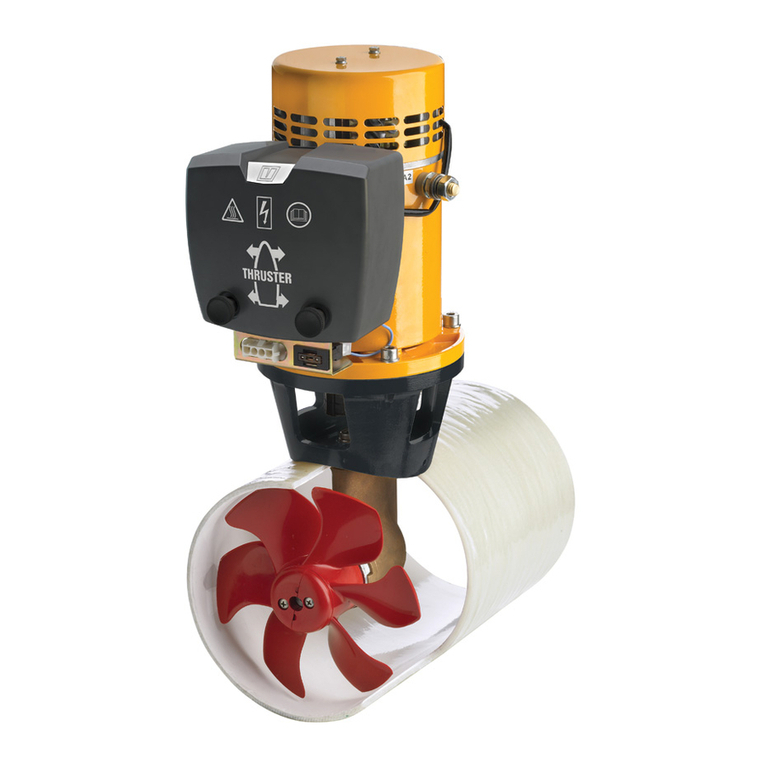
Vetus
Vetus BOW4512D Operation manual and installation instructions
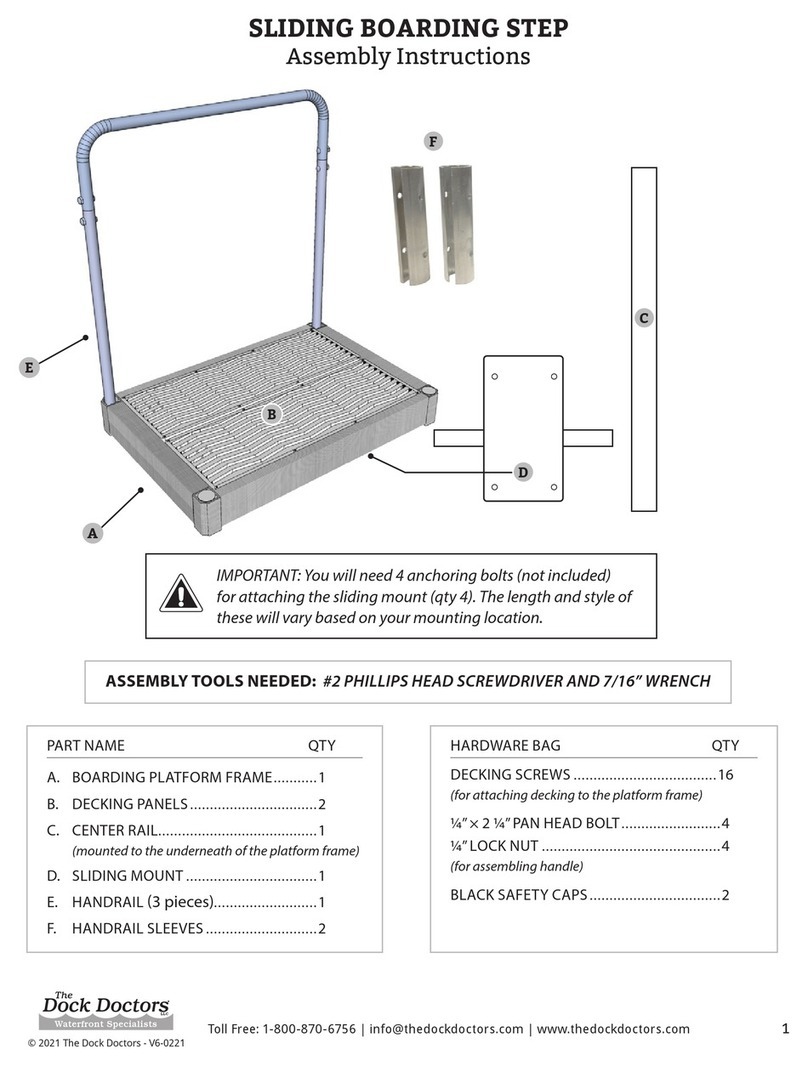
Dock Doctors
Dock Doctors SLIDING BOARDING STEP Assembly instructions

Mastervolt
Mastervolt Mass Combi 12/2000-100 Quick installation

SeaView
SeaView PM5-FMD-8 installation instructions
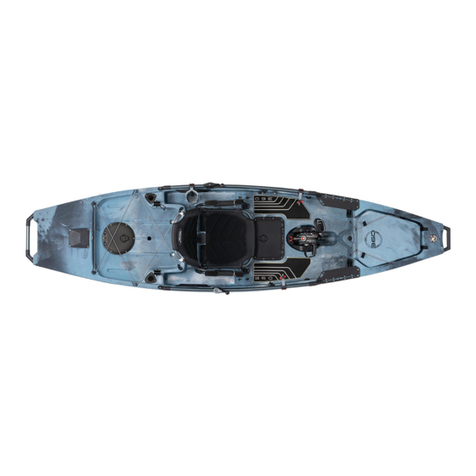
Hobie
Hobie Mirage 360 manual
